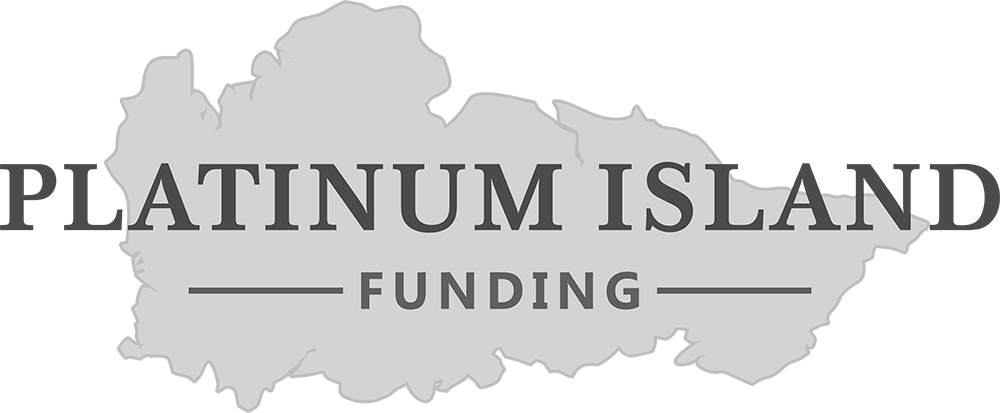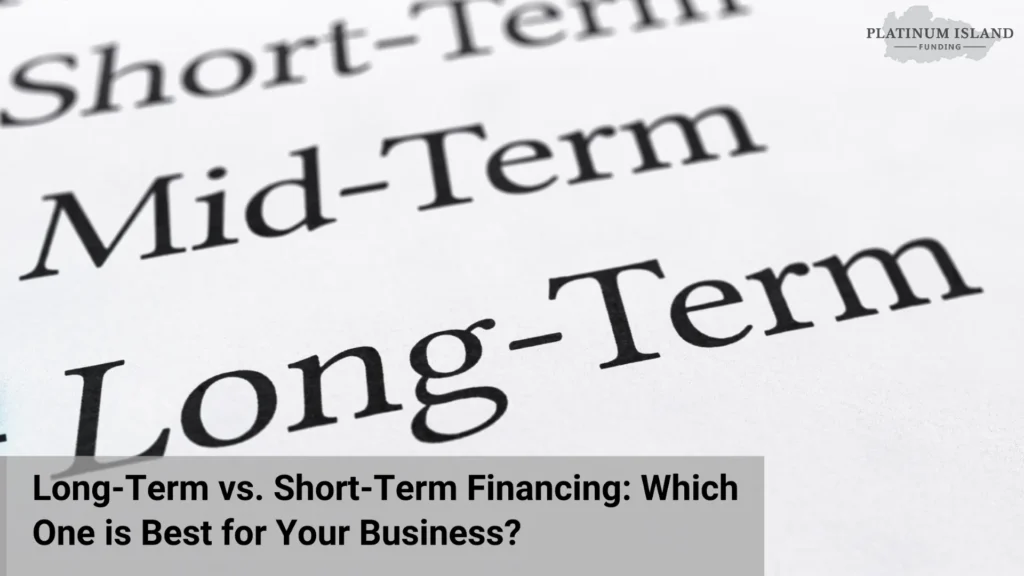As a business owner, finding the right financing option to fuel your company’s growth is essential. But with so many choices available, it’s easy to feel overwhelmed by the decision-making process. One of the biggest choices you’ll face is between long-term financing and short-term financing.
Both types of financing have their own advantages and are suited to different business needs. Understanding the difference between long-term vs. short-term loans can help you choose the right option based on your business’s cash flow, growth stage, and future plans.
In this article, we’ll explore the key differences between long-term financing and short-term financing, discuss the industries that benefit most from each option, and help you make an informed decision. Let’s dive into the world of short-term loan vs. long-term loan to see which is best for your business.
What is Long-Term Financing?
Long-term financing is typically used for larger investments that require extended repayment terms. This form of financing is ideal for businesses that need capital for significant growth, such as purchasing equipment, acquiring real estate, or funding large-scale projects.
- Loan Term: Repayment periods usually range from 5 to 25 years.
- Loan Amounts: Can be as high as several million dollars depending on the loan type and lender.
- Interest Rates: Generally lower than short-term loans, but may involve more stringent qualification requirements.
Types of Long-Term Loans:
- Traditional Bank Loans
- SBA 7(a) Loans
- Equipment Financing
- Commercial Mortgages
What is Short-Term Financing?
Short-term financing is a quicker, more flexible option for businesses that need immediate access to funds but can repay the loan in a shorter timeframe. These loans are typically used for urgent business needs like inventory purchases, working capital, or to cover cash flow gaps.
- Loan Term: Typically ranges from a few months to 3 years.
- Loan Amounts: Usually smaller than long-term loans.
- Interest Rates: Higher interest rates compared to long-term financing.
Types of Short-Term Loans:
- Merchant Cash Advances
- Business Lines of Credit
- Invoice Factoring
- Short-Term Bank Loans
Compare your loan options and get funded fast.
Long-Term vs. Short-Term Loans: Key Differences
| Feature | Long-Term Financing | Short-Term Financing |
| Loan Term | 5 to 25 years | A few months to 3 years |
| Loan Amount | Higher loan amounts | Smaller loan amounts |
| Repayment Terms | Lower monthly payments with longer repayment periods | Higher monthly payments due to shorter terms |
| Interest Rates | Generally lower | Higher interest rates |
| Eligibility Requirements | Stricter eligibility and approval process | Easier to qualify for, but higher rates |
| Purpose | Larger projects, equipment purchases, real estate | Working capital, cash flow gaps, inventory |
Pros and Cons of Long-Term Financing
Pros:
- Lower Interest Rates: Long-term loans often come with lower rates than short-term options, saving you money on interest over the life of the loan.
- Extended Repayment Periods: The longer loan term allows you to pay smaller, more manageable monthly payments, making it easier to balance your cash flow.
- Larger Loan Amounts: Long-term loans can provide your business with the capital needed for larger investments like real estate or equipment.
Cons:
- Lengthy Approval Process: Obtaining a long-term loan can take time due to strict qualification criteria and documentation requirements.
- Collateral: Many long-term loans require collateral, putting your business assets at risk.
- Commitment: Long-term loans tie your business to a long-term repayment plan, which can limit flexibility in the future.
Pros and Cons of Short-Term Financing
Pros:
- Quick Access to Funds: Short-term loans are typically faster to approve and disburse, providing your business with immediate access to capital.
- Flexibility: They are ideal for businesses that need quick solutions for short-term financial needs such as working capital or inventory purchases.
- Fewer Qualifications: Short-term loans usually have less stringent qualification criteria, making it easier for businesses with less-than-perfect credit to qualify.
Cons:
- Higher Interest Rates: The trade-off for fast approval is that short-term loans often come with higher interest rates.
- Short Repayment Periods: Due to the shorter loan term, businesses may face higher monthly payments, which could strain cash flow.
- Smaller Loan Amounts: Short-term financing is usually limited to smaller loan amounts, which may not be suitable for larger business needs.
Talk to our experts to find the right financing fit.
Long-Term vs. Short-Term Financing: Which One is Best for Your Business?
When to Choose Long-Term Financing:
- If you need significant capital for large investments like equipment, real estate, or expanding your business.
- If you prefer lower interest rates and manageable monthly payments over a longer period.
- If your business has a stable cash flow and can handle the commitment of long-term debt.
When to Choose Short-Term Financing:
- If your business requires quick access to cash for urgent needs like payroll, inventory, or covering seasonal expenses.
- If your business is experiencing temporary cash flow issues and can repay the loan within a shorter timeframe.
- If you need a small amount of capital to cover specific expenses and don’t want to commit to long-term debt.
Top Industries That Benefit from Merchant Cash Advances
A Merchant Cash Advance (MCA) is a type of short-term financing designed for businesses that rely on consistent credit card sales. While MCAs can be a great option for businesses in need of quick funding, they are typically best suited for industries with high transaction volumes and steady cash flow.
Industries That Benefit from MCAs:
- Retail: Businesses with consistent daily sales and high credit card transactions.
- Hospitality: Restaurants, bars, and hotels often use MCAs to cover operational expenses, renovations, or staffing.
- Healthcare: Medical practices and clinics can use MCAs to cover operational costs or upgrade equipment.
- Transportation: Businesses in the logistics and transportation industries use MCAs for quick cash flow management.
Conclusion: Making the Right Choice
When it comes to long-term vs. short-term financing, the right choice depends on your business’s unique needs, goals, and financial situation. Long-term loans are ideal for large investments and stable businesses looking for manageable monthly payments. On the other hand, short-term financing is perfect for businesses that need quick access to cash but can handle higher interest rates and shorter repayment periods.At Platinum Island Funding, we offer a range of financing options including merchant cash advances, business lines of credit, SBA loans, and more to help your business grow. Contact us today to learn more about the right financing options for your business!
Ready to grow your business? Explore funding today.
Ready to explore financing options for your business? Contact Platinum Island Funding today and let us help you find the right solution for your needs!
FAQ Section
What is the main difference between long-term and short-term loans?
The primary difference is the repayment period. Long-term loans have a repayment period of 5 to 25 years and are suited for large capital investments. Short-term loans typically have repayment periods of a few months to 3 years, ideal for covering urgent business needs.
Can a short-term loan affect my business credit score?
Yes, just like any loan, short-term loans can impact your credit score. Timely payments can improve your score, while late payments may hurt it.
Which type of loan is better for small businesses?
Small businesses typically benefit from short-term loans if they need quick access to capital for operational expenses. However, if your business requires significant investment, long-term financing may be the better option.


